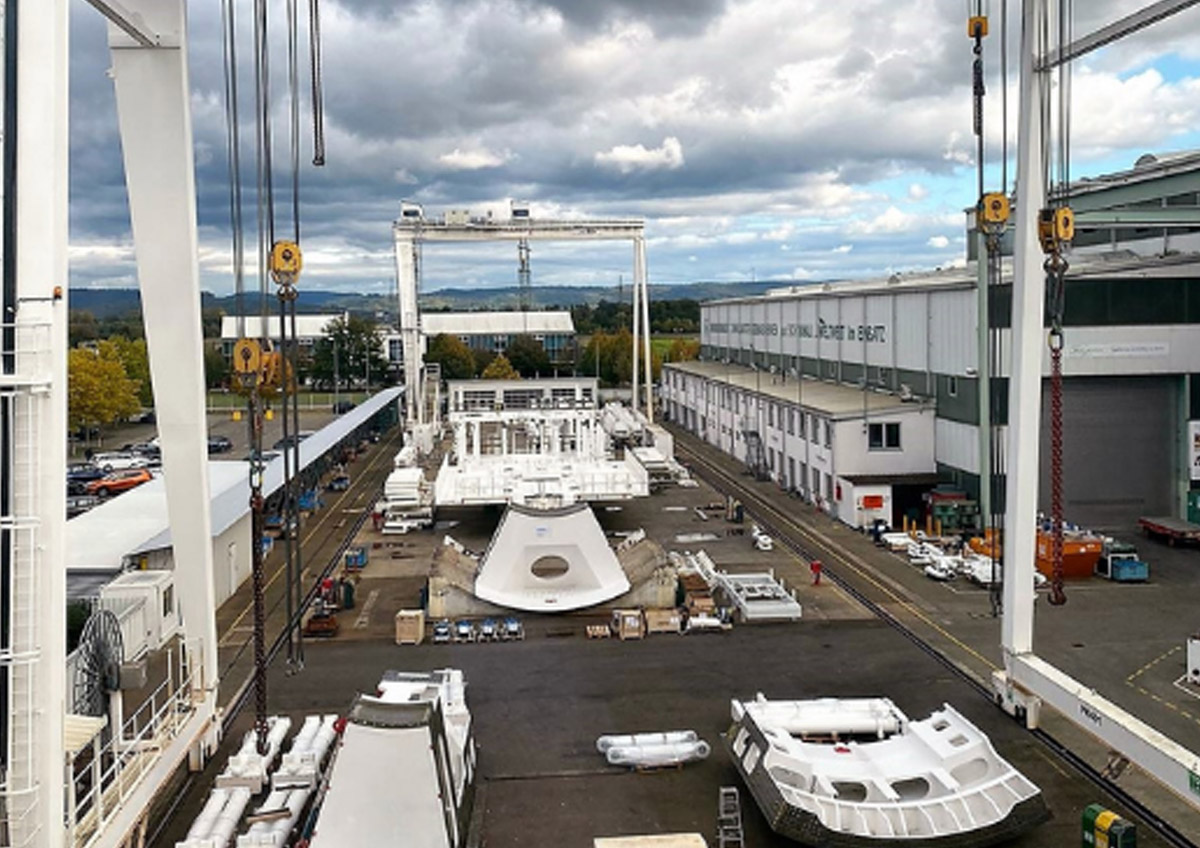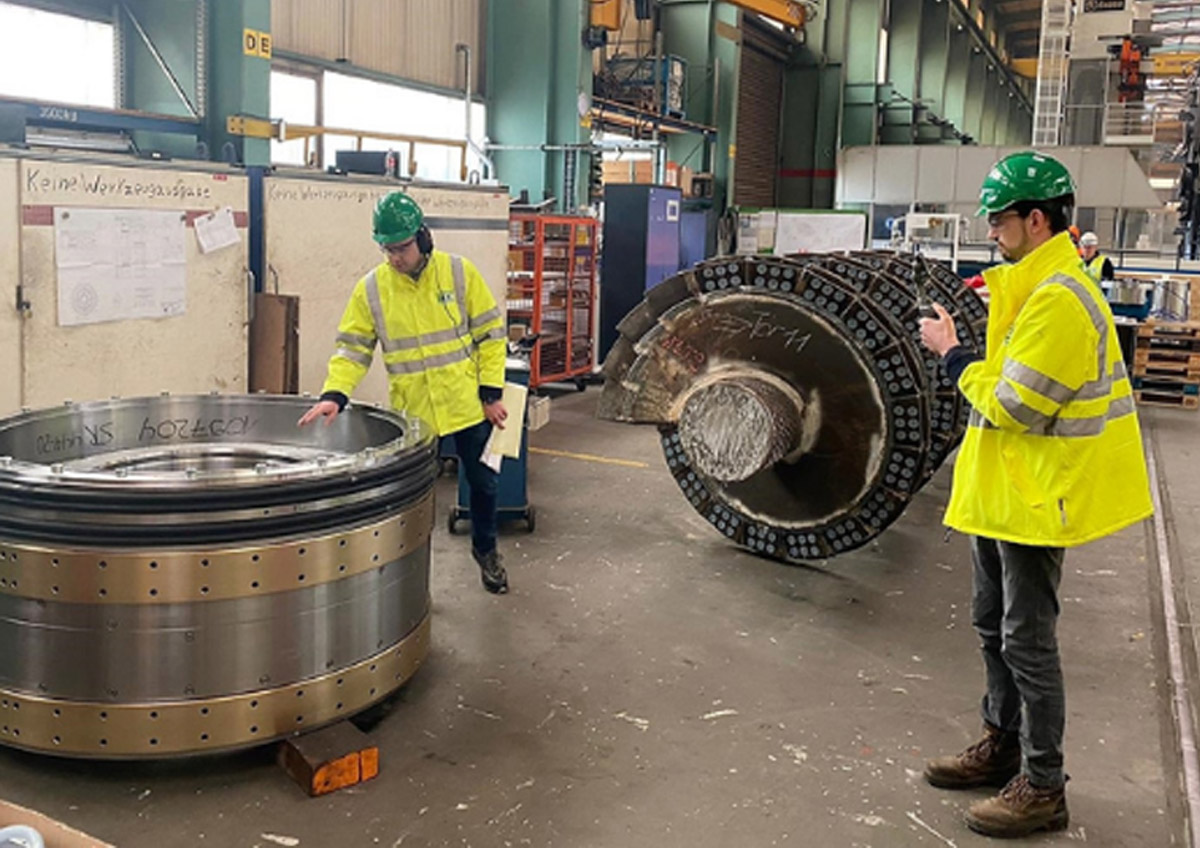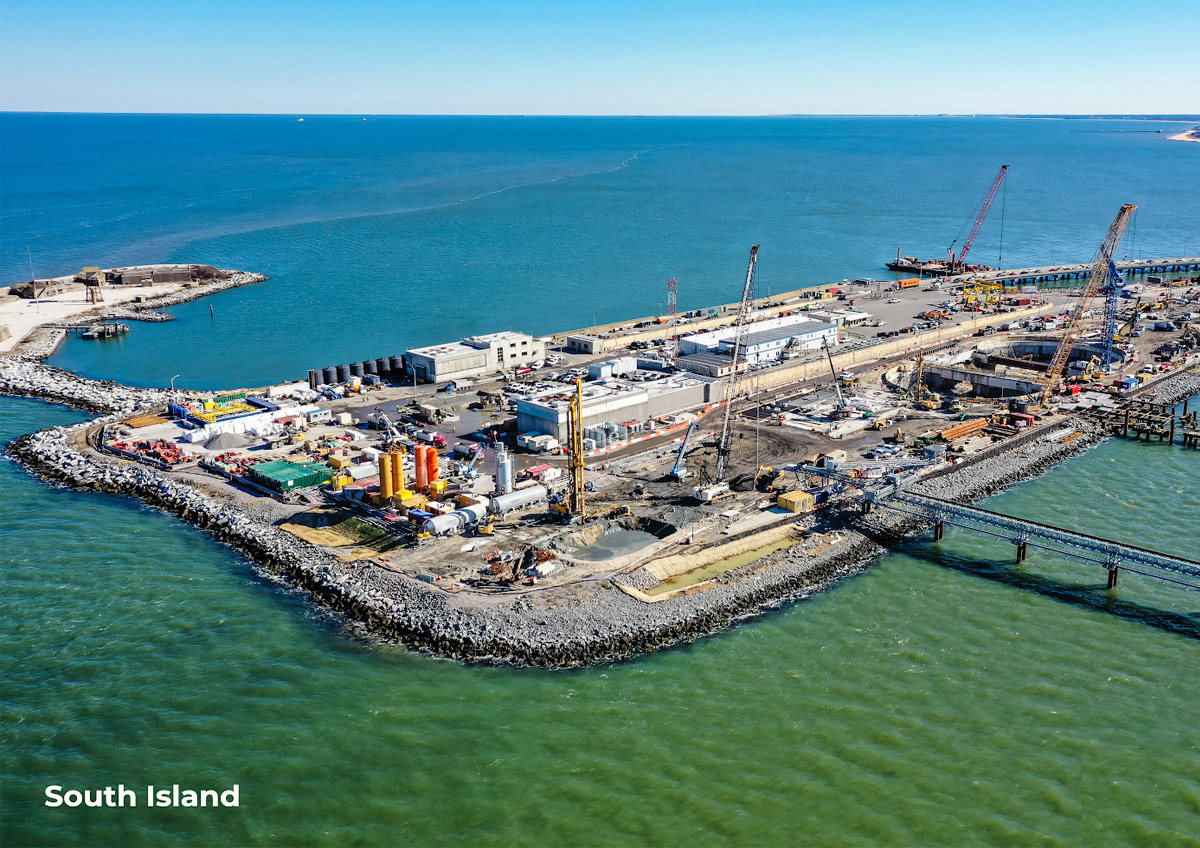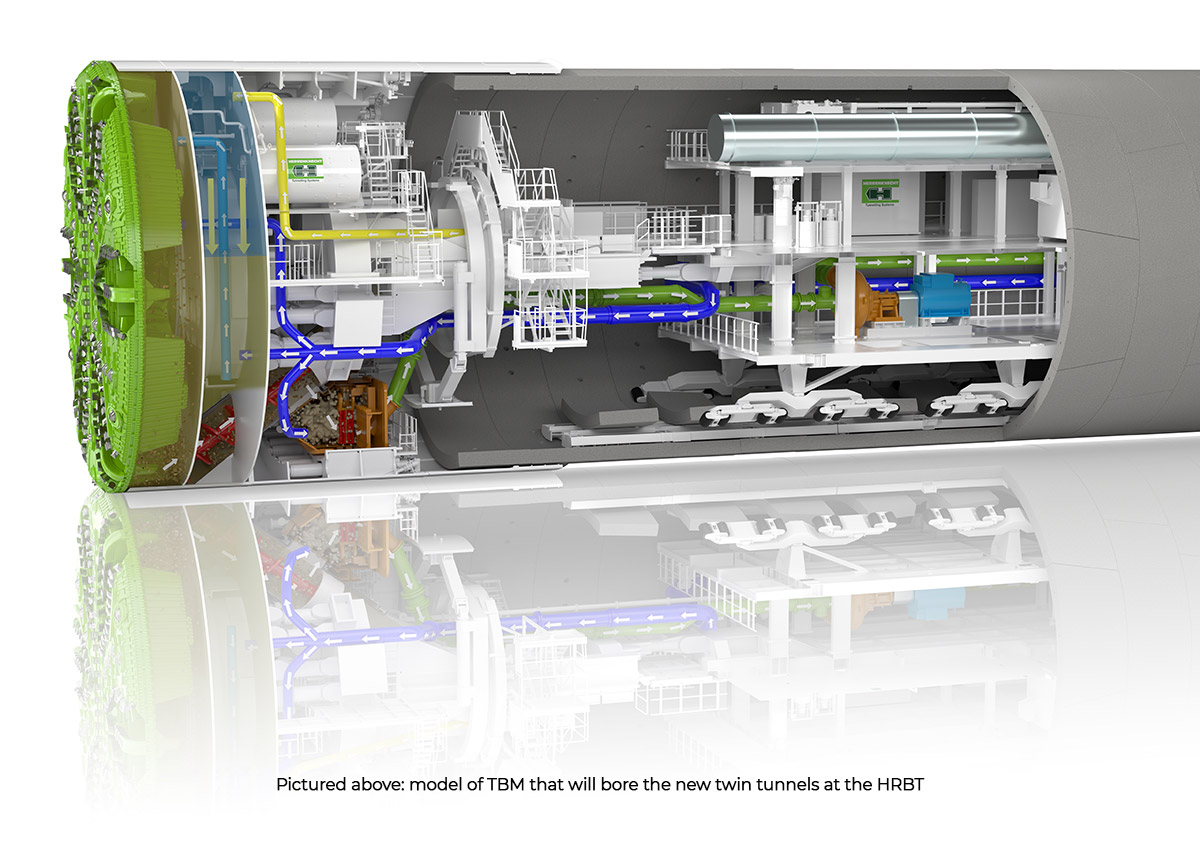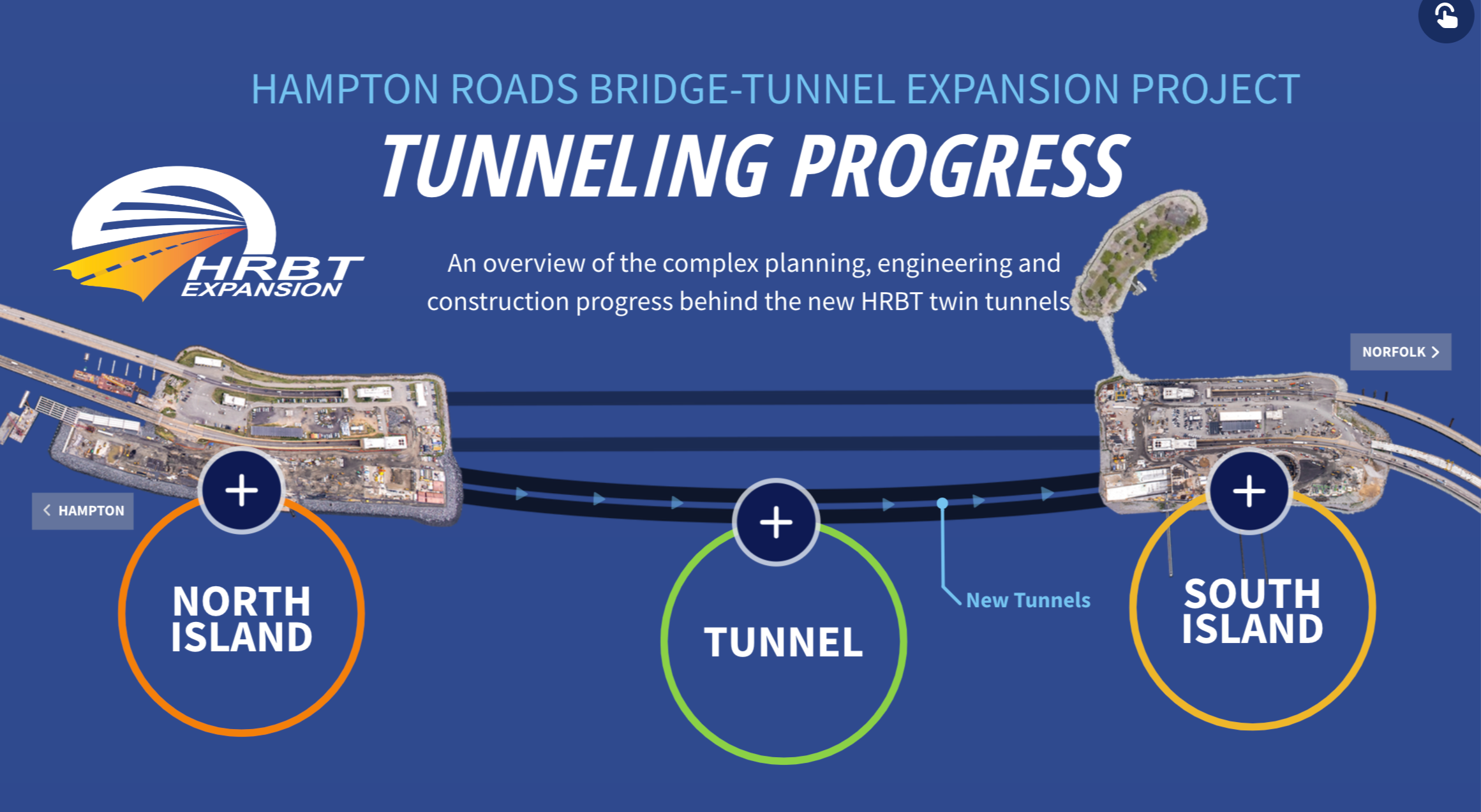TUNNEL BORING
- Home
- >
- Tunnel Boring
Hampton Roads Connector Partners (HRCP), the project’s joint construction venture, awarded a contract to Herrenknecht of Germany for construction of the TBM. It took approximately 14 months to build the 46-feet-high machine, approximately four months to ship it from Germany, and another six months to assemble the TBM on the HRBT’s South Island in a 65-foot pit. The TBM is longer than a football field. As you can see from the picture of the TBM’s cutterhead, the machine is about the height of the HRBT Project Office, which is a four-story building. The price tag for the TBM alone is $70 million which includes construction, shipping and assembly costs.
The TBM launched from the South Island (Norfolk side) in April 2023, and tunnel at a rate of about 50 feet per day. It is boring down to the layer of soil known as the Yorktown layer, approximately 50 feet below the current tunnels. The TBM excavates the tunnels with a circular cross-section through the soil. The process will take more than two years. Built specifically for the HRBT Expansion Project, the TBM will be a central component of the project. The existing ten tunnels in Hampton Roads are immersed tubes. Advances in tunnel technology make the bored-tunnel approach desirable for the expansion project. The method has fewer environmental impacts and does not disrupt Navy, marine, or commercial traffic in the busy federal channel.
“Mary” TBM Digging Progression

Norfolk to Hampton: Tunnel One
The Tunnel Boring Machine (TBM) will tunnel towards the North Island (Norfolk to Hampton) completing the first tunnel in roughly one year. Then the TBM will be repositioned for the return trip, which will take approximately six months. Then, for another year, the TBM will bore a second parallel tunnel back to the South Island. The new tunnels will be approximately 50 feet deeper than the current tunnels and each will be 8,000 feet in length.
Because the tunnel-boring machine excavates from beneath the riverbed, this technology essentially eliminates disruption to commercial and military shipping in one of the nation’s most important navigation channels.
TBM NAMING CONTEST
She’s Big. She’s Bold. She has a Name!
The HRBT Expansion Project held the Tunnel Boring Machine (TBM) Naming Contest in the fall of 2020. The contest was open to middle school students in Hampton Roads. First place winner of the contest was Saint Gregory the Great Catholic High School in Virginia Beach with the name, “Mary the TBM” in honor of Mary Jackson of Hampton, VA – mathematician and aerospace engineer at NASA, noted for her pioneering role of an African American woman in the field of science and engineering, and her crucial contributions to the NASA Space Program. The winning name, “Mary the TBM”, will be printed on the TBM that will bore the new twin tunnels at the Hampton Roads Bridge Tunnel.
Congratulations to students from Saint Gregory the Great Catholic School – Team Sancti Potentes in Virginia Beach who won First Place in the TBM Naming Contest. The student team submitted a video in the style of a newscast featuring the TBM. The team presented the name “Mary” for Mary Jackson – mathematician and aerospace engineer at NASA, noted for her pioneering role of an African American woman in the field of science and engineering, and her crucial contributions to the NASA Space Program. Additionally, Mary Jackson was from Hampton, Virginia, which the students pointed out as one of their reasons for selecting Mary as the name for the HRBT Expansion Project TBM.
Second Place was awarded to students from Crittenden Middle School in Newport News, VA who submitted the name “Mary” as a brochure entry. Third Place was awarded to students from Hunter B. Andrews PreK-8 in Hampton, VA who submitted the name “TEO” for The Emancipation Oak as a brochure entry.
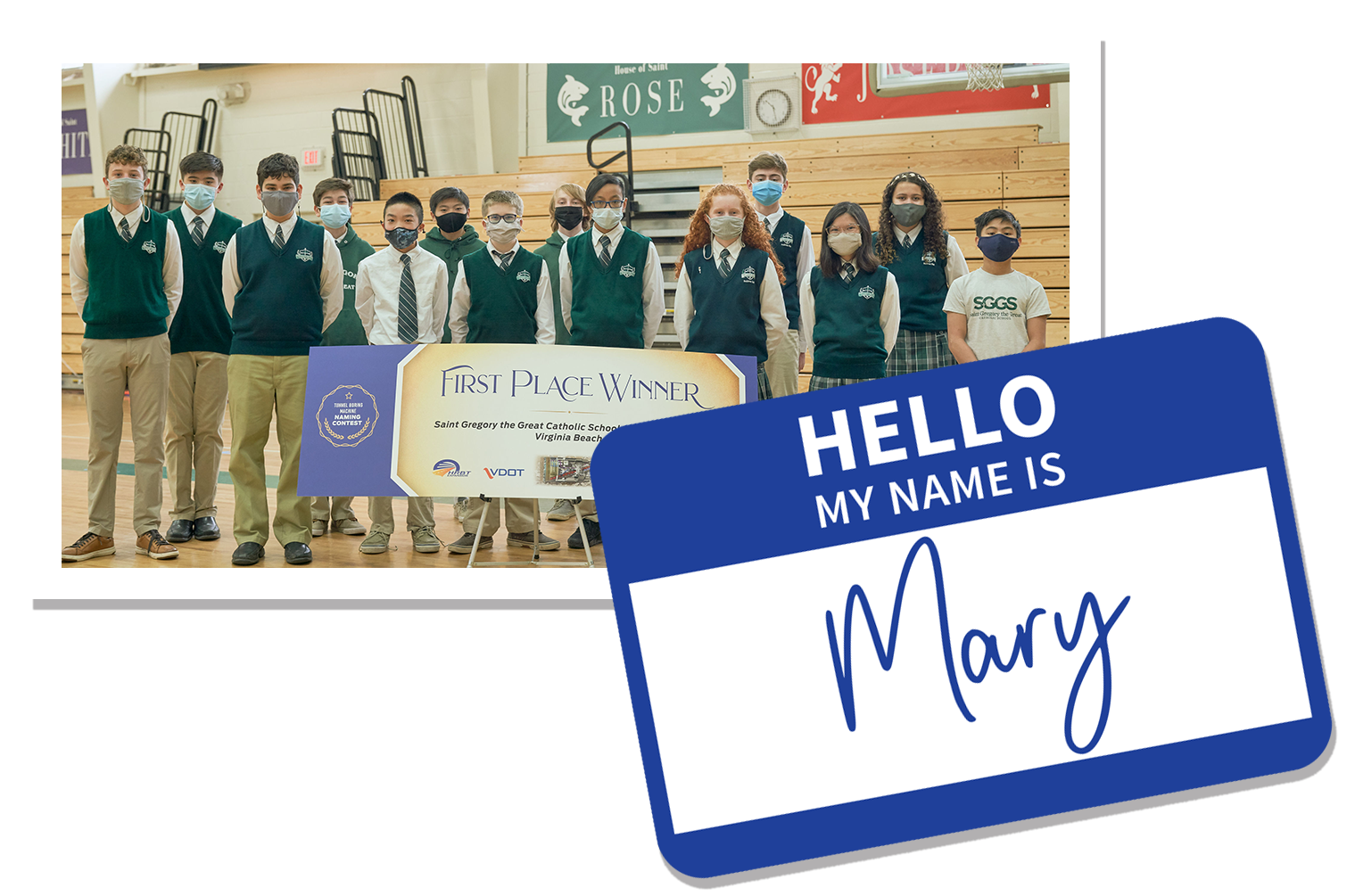
TBM FACTORY ACCEPTANCE TEST (FAT)
The HRBT Expansion Project reached another milestone as the Tunnel Boring Machine (TBM), named “Mary the TBM,” achieved completion of the Factory Acceptance Test (FAT).
The FAT process was rigorous, taking place over several weeks as engineers from the design-build team, Hampton Roads Connector Partners (HRCP), examined and tested every component of “Mary,” to demonstrate that all systems function as designed and to address any adjustments needed while the machine is still at the factory. “Mary” was designed and built by Herrenknecht in Germany. The FAT was the final stage of the manufacturing process. “Mary” was then prepared for her journey home, arriving December 2021 in the United States.

